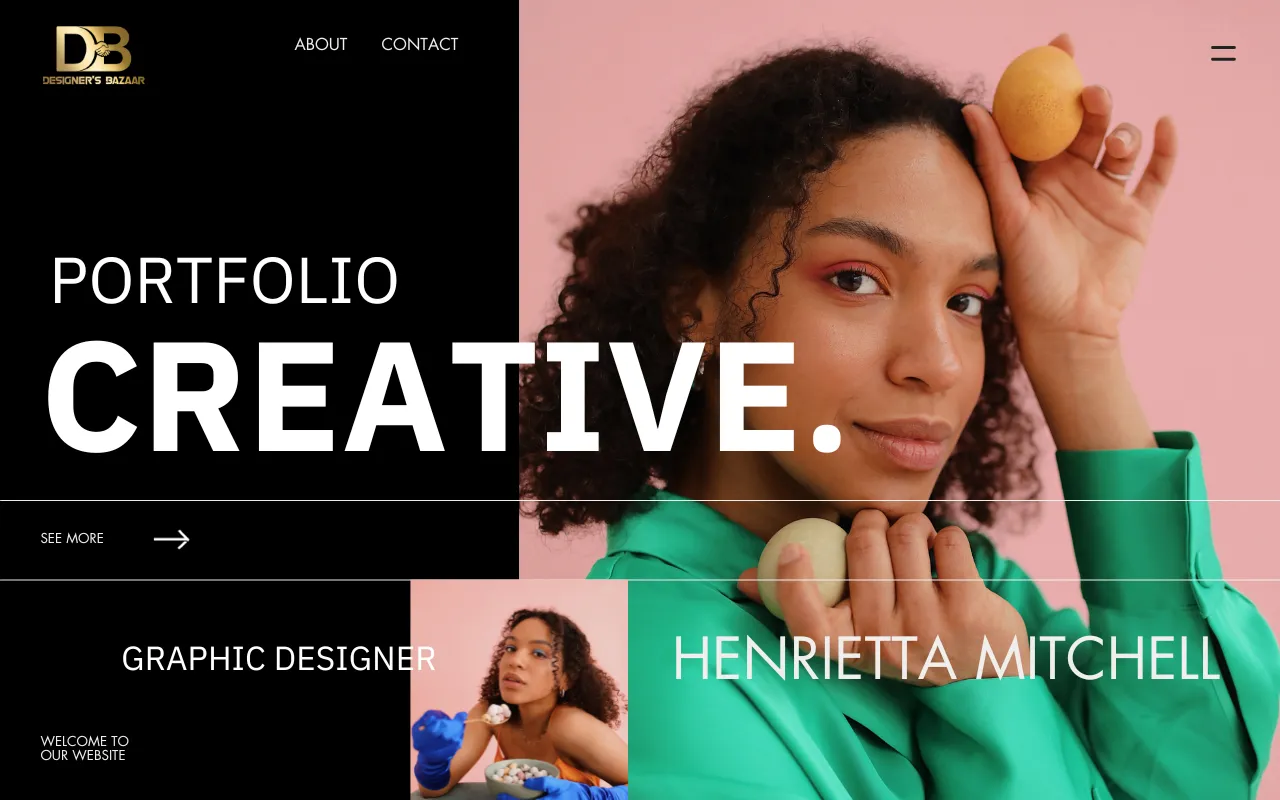1 min read A Guide to Building a Creative Portfolio

A well-crafted portfolio is more than a collection of work; it's your visual narrative, a testament to your skills, creativity, and unique perspective as a creative professional. Whether you're a designer, photographer, writer, or any other creative, your portfolio is your digital handshake. Here's a guide on how to make a creative portfolio that leaves a lasting impression.
1. Define Your Purpose and Audience
Before diving into the creative process, clarify the purpose of your portfolio and identify your target audience. Are you showcasing your work to potential clients, employers, or fellow creatives? Understanding your audience helps in tailoring the content, style, and presentation of your portfolio to meet their expectations.
2. Curate a Diverse Selection of Work
Your portfolio should represent the breadth and depth of your skills. Include a variety of projects that showcase your versatility and expertise. Whether it's a range of design styles, photography genres, or writing formats, diversity in your portfolio paints a comprehensive picture of your capabilities.
3. Start with a Strong Introduction
Your portfolio's homepage should make a striking first impression. Include a brief and engaging introduction that provides insight into who you are, what you specialize in, and what makes your work unique. Use this space to set the tone for the rest of the portfolio.
4. Organize with a Cohesive Structure
Create a structured and easy-to-navigate portfolio. Organize your work into logical categories, such as projects, themes, or mediums. A well-organized portfolio makes it effortless for visitors to explore your creations and understand the narrative behind each piece.
5. Quality Over Quantity
While diversity is key, prioritize quality over quantity. Choose your best and most impactful work to feature in your portfolio. A concise selection of high-quality pieces will leave a stronger impression than overwhelming your audience with a large volume of mediocre work.
6. Craft Compelling Project Descriptions
Accompany each project with a thoughtful and concise description. Explain the creative process, challenges faced, and solutions implemented. Providing context adds depth to your work and allows viewers to connect with the story behind each creation.
7. Showcase Your Creative Process
Many creatives overlook the value of showcasing their creative process. Include sketches, drafts, or behind-the-scenes glimpses into how you approach a project. This not only adds authenticity to your portfolio but also provides valuable insights into your problem-solving and ideation processes.
8. Incorporate Testimonials and Endorsements
If you've received positive feedback or testimonials from clients or colleagues, consider incorporating them into your portfolio. Client testimonials add credibility and give potential clients or employers a glimpse into your professional relationships and the impact of your work.
9. Optimize for Mobile Viewing
In our mobile-centric world, ensure that your portfolio is optimized for seamless viewing on various devices. A responsive design guarantees that your work looks impressive whether viewed on a desktop, tablet, or smartphone.
10. Maintain an Updated Portfolio
Your portfolio is a living document that should evolve with your skills and body of work. Regularly update it with new projects, achievements, or skills acquired. An up-to-date portfolio reflects your ongoing commitment to growth and showcases your most recent accomplishments.
Conclusion
Your creative portfolio is your visual identity—a dynamic representation of your artistic journey. By carefully curating your best work, providing context, and staying attuned to the needs of your audience, you can craft a portfolio that not only showcases your talent but also opens doors to exciting opportunities in the creative realm. Let your portfolio be a reflection of your passion, dedication, and the boundless possibilities of your creative mind.





































































